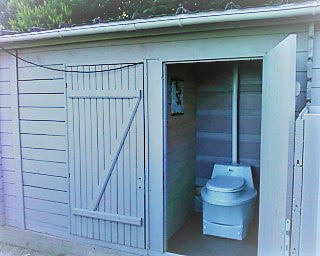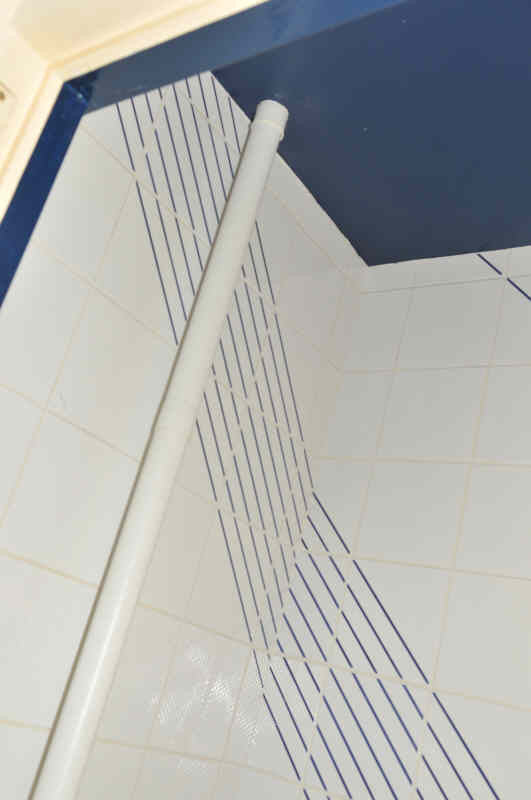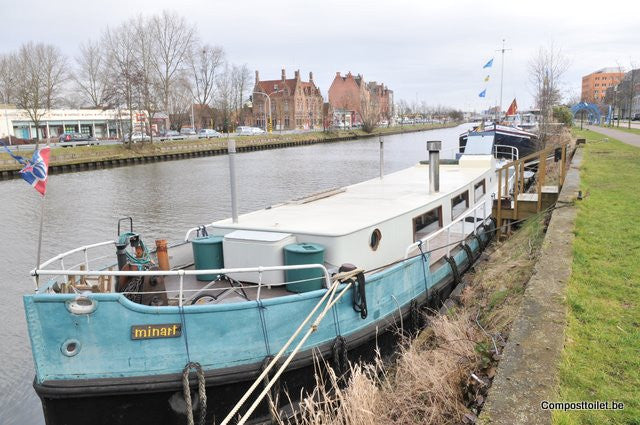Where to use a composting toilet ?
Composting toilet in a holiday residence
Biolet is the ideal solution for your holiday cottage or holiday house. Very often access to water or a septic installation is difficult.
Holiday houses are mainly used with good weather conditions, so temperature is above 18 degrees, with allows a optimum functioning of the toilet.
Possible choices :
- intensive use of multiple people: Biolet 55, 65
- less intensive use (short periods), or less people : Biolet 55
- separation toilet and/or less or no/limited electricity available : Separera 30

When you leave you holiday residence, you simply switch off the toilet and close it. In winter, when the toilet is not used, the toilet can easily resist cold temperatures.
Dry toilet on a Boat
Biolet is an ecological solution for medium to large sized boats (not for small boats). It is ecological as there is no waste or no brown water. The only remainder is compost, that can be reused on land. You can stay 3 to 4 weeks on water without having to remove the compost. The Biolet will use electricity. No smell on the boat.
Composting toilet in a house
A Biolet toilet can be installed easily in most regular houses. Temperature is 18° C or higher which is ideal for the composting toilet and there is no odour in house.
Below photo's of an installation.
Pipe going upwards in the toilet:

Pipe going upwards in the attic with insulation:

Pipe coming out of the roof (recommended 1,10 meters above the roof, pipe going straight up):

Ecotoilet in a passive house
A Biolet toilet can be installed in a passive house.
You can choose between two type of models :
- the high comfort models (Biolet 55 and 65) do have an internal warming element that is used during peak moments in order to speed up the composting and the evaporation of fluid. The electricity use is 50 to 65 watt per hour on average. About 25 m3 of air per hour comes in the toilet. The air finally or goes out of the house or comes into the balance ventilation system of the house in order to reuse the warmer air. So the balance ventilation can be adapted for this use. No odour comes in the house. As a passive house is in general warmer (20° till 25° C) and dryer as a normal house, the thermostat might be put lower so that less electricity is used, and if compost becomes to dry add some water.
- the Separera model 30. This toilet has no internal warming units. It does have a fan for air ventilation, with a capacity of 16 watts (230 volt), 15m3 of air per hour enters in the toilet. A part of the urine penetrates out of the toilet into a lower area (this is an plastic container or simply the soil under the house). The electric consumptions is very low, the quantity of air that comes into the toilet is lower. Very important is the constant temperature of minimum 18°C. Connection it to the balance ventilation is less important, as the temperature of the air coming out is lower.
Do not hesitate to ask more technical information.

Composting Toilet in Nature Reserve Areas
A composting toilet has no negative impact on nature. The only remainder is the compost, and this can be reused.
If you have no or limited electricity, then the Separera 30 is the best solution. The toilet will work at his best in the April - September period, as environment temperature is high enough.



